SPL Lighting LED modules
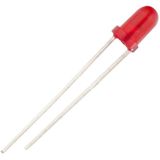

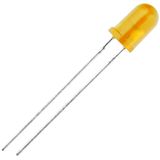
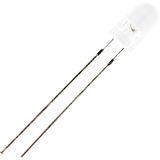
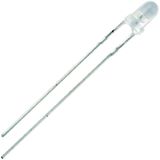

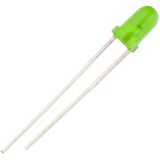


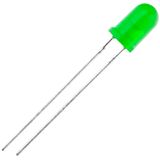

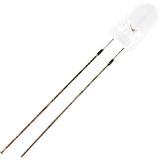
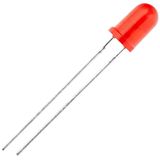

spl lighting led modules portfolio and formats
Boards are built around stable mechanical families to simplify OEM builds and retrofits. Expect rigid MCPCBs in 50×50, 70×70, and 120×70 mm plates for downlights and bulkheads; linear sticks in 280/560/1120 mm for channels and pendants; and round stars (Ø19–50 mm) for compact spots. Electrical rails are 24 V or 48 V constant-voltage for strip-style arrays and 150–700 mA constant-current for COB/board engines. Efficacy typically 150–190 lm/W at 4000 K CRI 80 and 120–150 lm/W where CRI 90 with R9 > 50 is required. Colour packs: 2700/3000/3500/4000/6500 K, ≤3 SDCM binning on project lots. Operating window −25…+50 °C subject to Tc ≤ 85 °C; copper weights and thermal vias are sized for even spread on small footprints.
Standards and reliability notes
Modules comply with EN/IEC 62031; drivers pair to EN/IEC 61347-2-13 with IEC 62384 performance. Source data is LM-80 with TM-21 projections—L80 50–60k h at Ta 25 °C on mainstream bins, higher where Tc is held well below limit. Photobiological safety meets EN 62471 RG0/RG1. Solder pads and JST/Poke-in connectors are gold-finished for repeat servicing; through-holes align to common tray patterns so legacy housings don’t need drilling.
spl lighting linear led modules for luminaires
These MCPCB “sticks” target channel bodies and grid panels. Typical nodes per board: 6/12/18/24 W at 24 V CV or 150/350 mA CC, with batwing optics available for wide desk uniformity. Choose opal lenses for calm ceilings or micro-prismatic faces (UGR-minded) where offices need ≤19. For long runs, 48 V CV with power injection every 2–5 m keeps drop <3%; use 2×1.5–2.5 mm² feeds and maintain polarity through joiners. Emergency is straightforward: CV boards accept maintained inverters via dedicated inputs; CC variants ride on EL-marked drivers—document lumens in EM mode on the cut sheet.
Optics and colour stability
Clip-on lens rails (15°/24°/36°/60°) and film sets (batwing/wall-wash) avoid tooling delays. Colour drift stays within ≤3 SDCM across batches; CRI 90/R9-positive options are stocked for food, wood, and textile zones. For camera work, pro lots target PstLM ≤ 1.0 and SVM ≤ 0.4 when paired with high-frequency PWM drivers.
spl lighting high power led modules for spots and floods
Round stars and compact plates carry single or clustered emitters for 900–4000 lm cores. Drive currents 350–700 mA (select up to 1 A) with thermistor pads for closed-loop derate. TIR lens seats follow industry footprints (Ø16/Ø35) for narrow 10–15° accents up to 60° floods; honeycomb and softening films control near-field sparkle. Heatsinking is the design decider: keep baseplate-to-heatsink thermal resistance <1.5 K/W on 15–20 W nodes and <0.8 K/W above 25 W; aluminium posts or vapor-chamber pads are recommended in sealed heads. Surge 2 kV line-to-line on the driver side is the default; specify 4 kV where lifts/VFDs share boards.
Mechanical and connection details
Stars: 2–4 mounting holes, 2.0–2.2 mm. Plates: M3/M4 grid with isolation clearances around pads. Termination via poke-in (0.5…1.5 mm²) or solder lands; polarity is screened every pad to speed FAT/SAT. Tc points are silk-marked—publish probe locations on the drawing so service teams can verify margins.
Integration-ready spl lighting modular led systems
Kits bundle board + optic + bracket + connector tail to turn a tray into a finished engine. Linear kits add profile rails, opal/micro-prism lenses, end-caps, live/mid-feeds, and suspension hardware; downlight kits pair round plates with TIR lenses, reflectors, and spring carriers across 100/120/150/200 mm cut-outs. Through-wire sets keep DALI/0–10 V buses intact across sections. Finish options (white/black/aluminium) match trims and canopies to keep rooms visually coherent.
Driver and control pairing
- Constant-voltage rails for multi-board linear jobs: PWM, 1–10 V, or DALI-2 DT6; DT8 for tunable white.
- Constant-current for point sources: fixed-current or programmable drivers with NTC input; dim 1–3% low-end on pro lines.
PF ≥ 0.90 and THD ≤ 15% are standard on ≥50 W drivers. Keep lead lengths short, bond shields with 360° clamps at entry plates, and separate power/control conduits for EMC hygiene.
Series and collections at a glance
- Linear MCPCB (280/560/1120 mm): desks, aisles, coves; COB-style film for dot-free faces.
- Round Plate/Star (Ø19–50/70/120 mm): cylinders and downlights with lens seats; high-current capable.
- TW/RGBW dual/5-in-1 tracks: hospitality and feature walls on DT8/DMX.
- COB Board with remote phosphor: maximum uniformity under glass or opal.
Applications and selection cues
Open-plan and classrooms: 4000 K CRI 80/90 linear boards with batwing films for 300–500 lx at UGR ≤ 19. Retail: CRI 90 plates with 15°/24° optics for punch; linears for calm backgrounds. Hospitality: 2700/3000 K TW sets for sceneable ambience. Plant/back-of-house: value CRI 80 linear rails in gasketed profiles, −25…+45 °C drivers. When the spec names spl lighting lighting modules, pin length/output/SDCM and lens type on one line so procurement doesn’t guess.
Engineering checklist (kept precise)
- Lumen class and CCT/CRI (state R9 where needed).
- Electrical rail (CV 24/48 V vs CC 150–700 mA) and driver protocol.
- Optic: lens angle/film; UGR or wall-wash need.
- Thermal: heatsink Rθ, Tc probe site, keep-out distances.
- Mechanics: board size, hole map, connector type, insulation gaps.
Compliance: EN/IEC 62031; driver EN/IEC 61347-2-13; EN 62471 class; EMC per EN 55015/EN 61547.